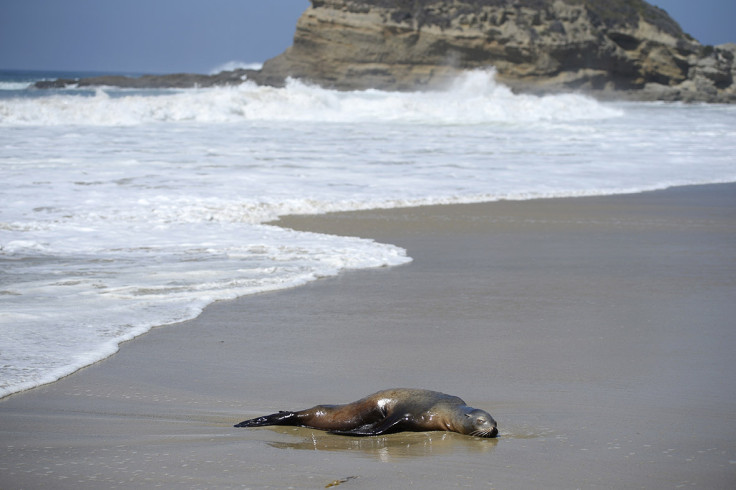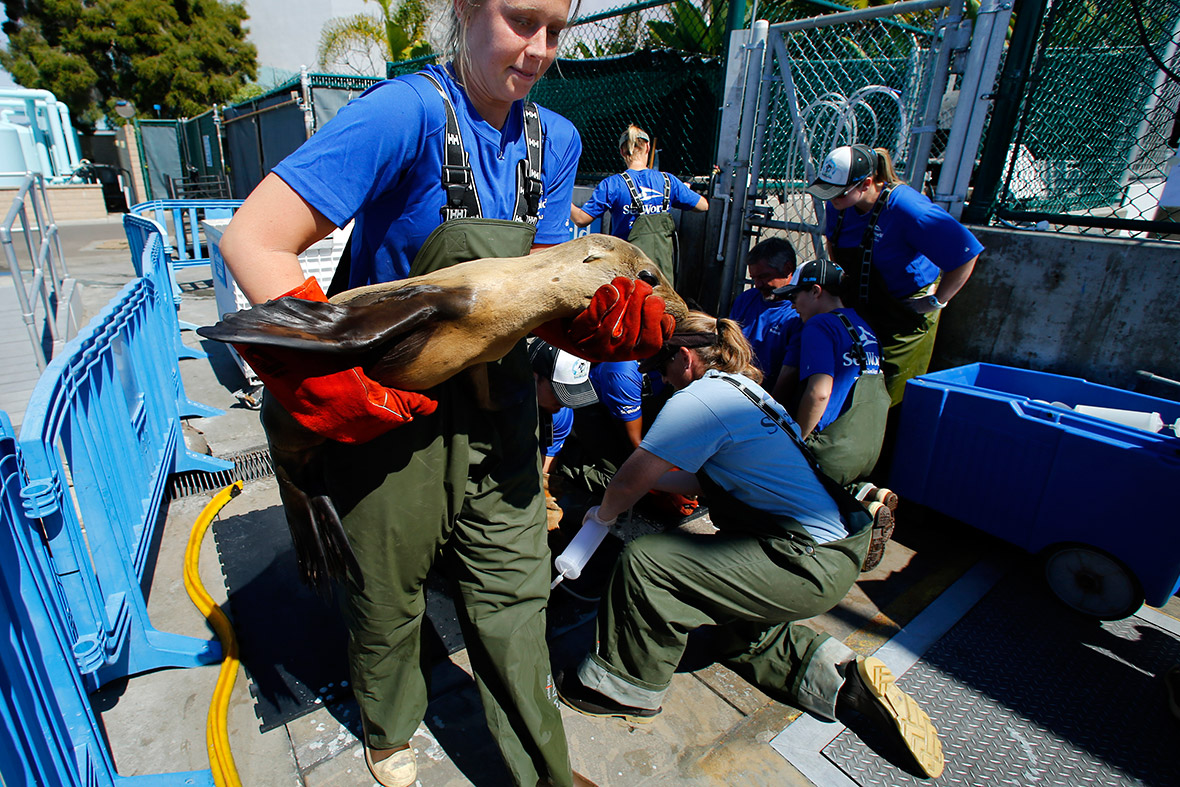California: Animal rescue centres struggling with record number of stranded starving sea lion pups
Malnourished sea lions – mainly pups – are getting stranded on California beaches in record numbers. The precise cause is not clear, but scientists believe sea lions are suffering from a scarcity of natural prey that forces nursing mothers to venture farther out to sea for food, leaving their young behind.

Discoveries of large numbers of emaciated young sea lions off California and starving seabirds off Oregon and Washington may be part of a large-scale shift of the Pacific Ocean to warmer and less productive conditions, according to a US National Oceanic and Atmospheric Administration report.
From 2014, waters off Southern California and the Gulf of Alaska turned significantly warmer than usual. The so-called "warm blobs" have grown to cover most of the West Coast, making for record-high water temperatures. The warm water is likely pushing prime sea lion foods – squid, sardines and anchovies – further north, forcing the mothers to abandon their pups for up to eight days at a time in search of sustenance.
Animal care rescue workers in California routinely take phone calls from beach-goers who see the stranded pups. Rescue centers are struggling to keep up with hundreds of sick and starving sea lion pups washing up along the coast. More than 1,450 pups have been rescued since January from beaches, but also from inside public toilets, behind buildings and along railroad tracks.


It's not unusual to have some sea lions wash up each spring as the pups leave their mothers, but so far, the number of stranded babies is five times greater than in 2013, the worst season in recent memory.
"Our facility as well as others in Southern California are at, or nearing, capacity. We're doing everything we can to work with rescue agencies and bring in as many patients as we can. The fact of the matter is this year, because of the inordinate numbers, we're not going to be able to save every single animal on the beach," says David Bard, the coordinator of the Marine Mammal Centre in San Pedro.
"This year we're predominantly seeing underweight animals. These animals should be in the 50 to 60 pound (22-27kg) range, and they are coming in a fraction of that," said Bard.
"These animals are coming in really desperate. They're at the end of life. They're in a crisis ... and not all animals are going to make it," said Keith A Matassa, executive director at the Pacific Marine Mammal Centre.
Commercial enterprises have also come to the rescue. SeaWorld recently shut down its sea lion shows so that the San Diego-based company could use the staff and facilities – including building two temporary pools for the pups – in anticipation of more rescues. SeaWorld has taken in nearly 500 of the starving animals, according to spokeswoman Kelly Terry.




At rescue centres like the Pacific Marine Mammal Centre in Laguna Beach, dozens of volunteers who've arrived from all over the US work round the clock.
The centre in one of Southern California's premiere beach communities has rescued more than 200 pups since the beginning of the year and has treated ones that weighed as little as 14 pounds (6kg) at eight months old.
On a recent day, in the course of two hours, five suffering animals came into the centre. Harried volunteers moved urgently along a narrow hallway between pens as they unloaded each one, wrapped it in a towel and performed a battery of tests. Most of the animals were so weak they barely resisted.




Those that make the cut are tube-fed a gruel of pureed herring, Pedialyte, vitamins and milk three or four times a day after starting out with a simple broth of hydrating fluids and dextrose.
Those that graduate to whole fish are playfully called "feeders" and those that can once more compete for fish tossed into a pool are called "fighters".



The goal is to get the pups strong enough to swim free again — but the volunteers who nurse them back to health may never know if they make it in the wild.
© Copyright IBTimes 2024. All rights reserved.






